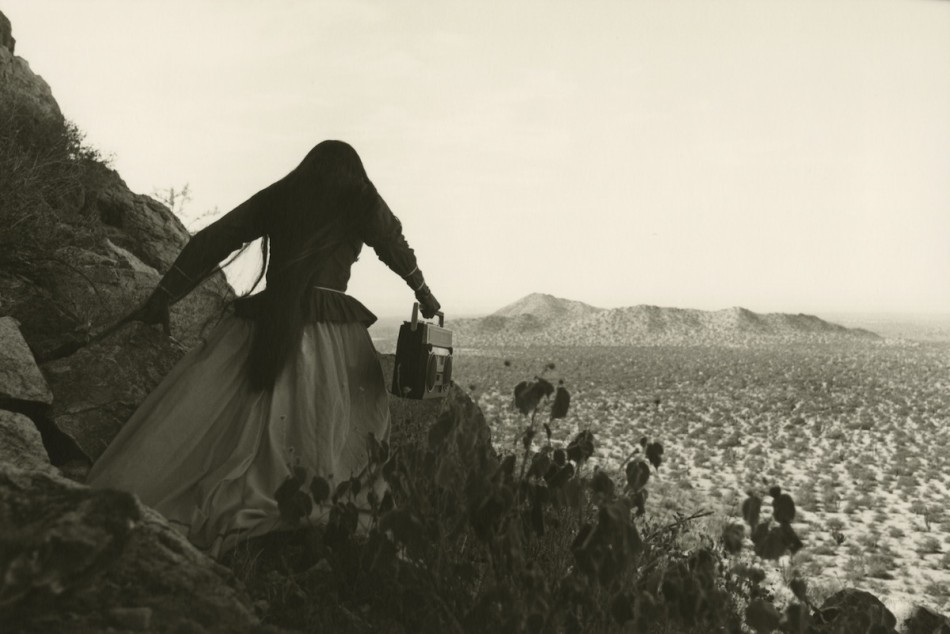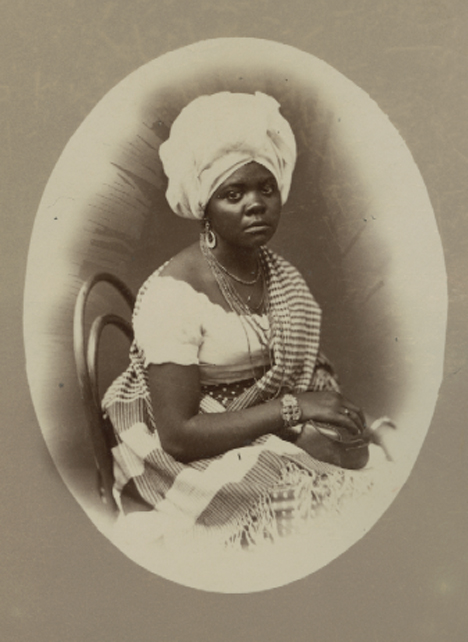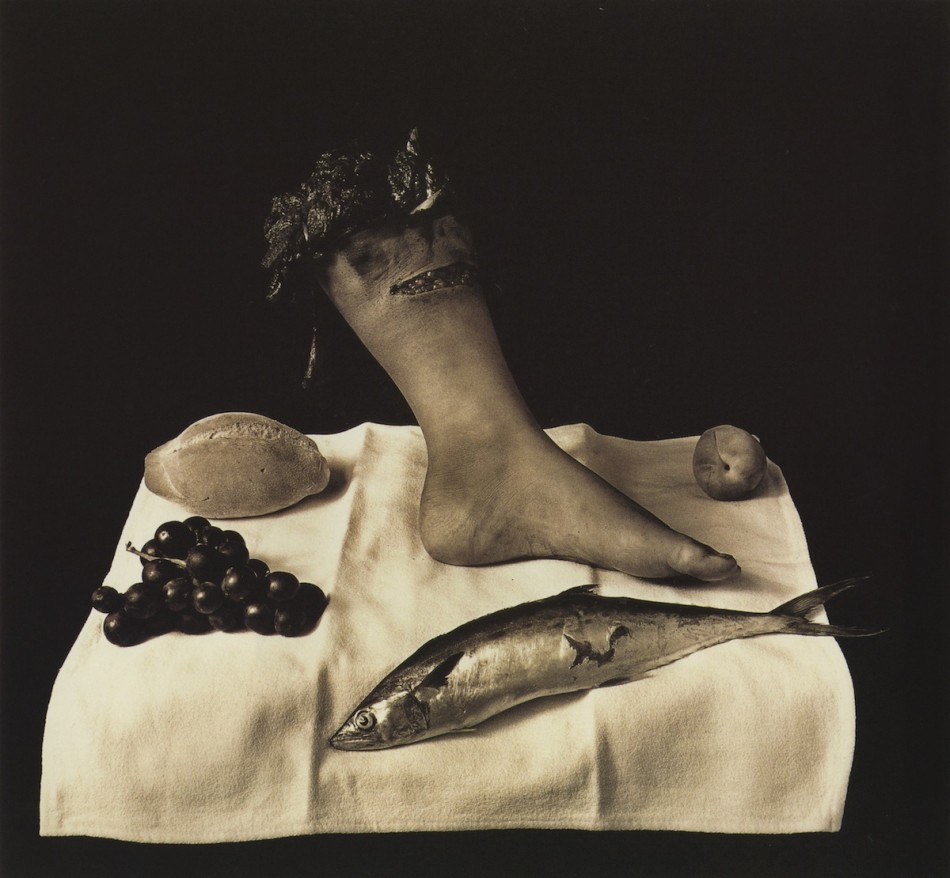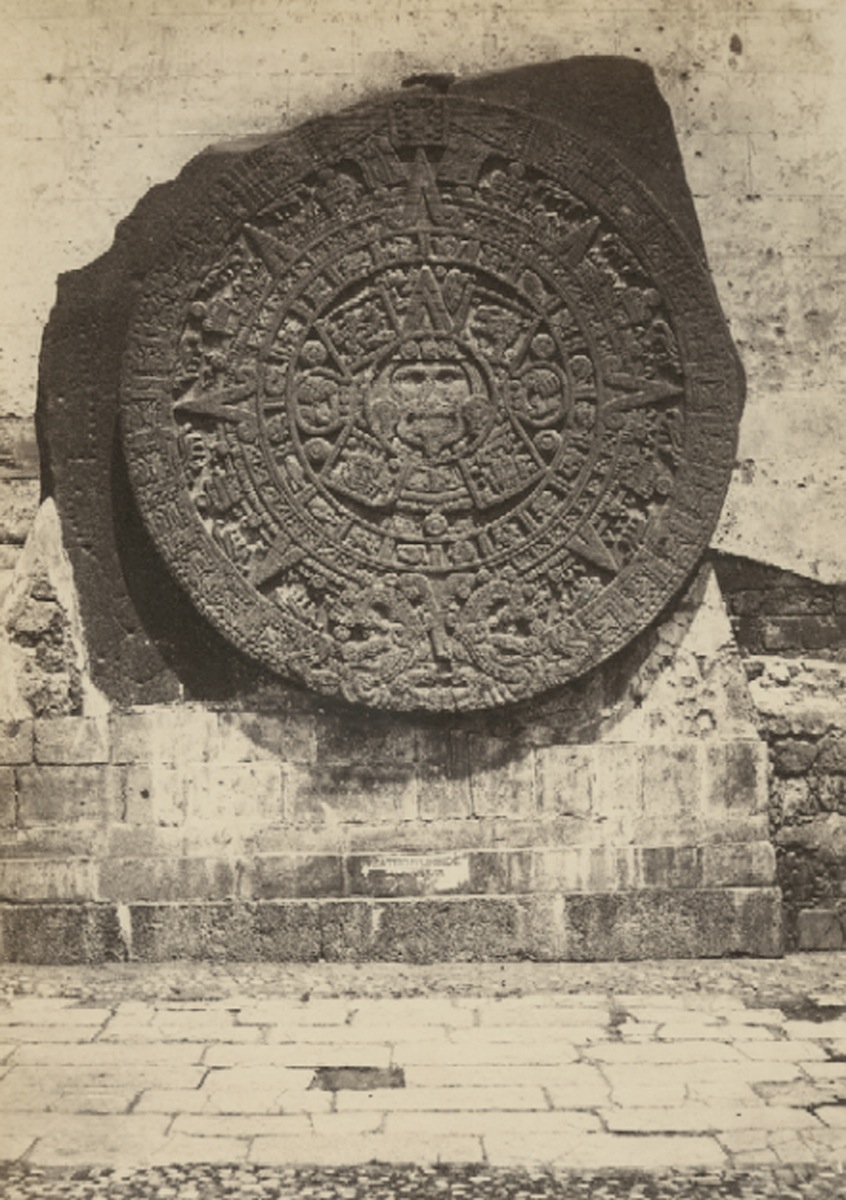
Marc Ferrez (Brazilian, 1843-1923); Untitled (Woman from Bahia) from the album South American Views, c.1888; 7 x 4 ¼ inches; Albumen silver print; Gift of Eleanor and Van Deren Coke; University of New Mexico Art Museum, Albuquerque
Border-blurring Illuminations: “Luz Restirada” at UNM Art Museum
The University of New Mexico Art Museum (a satellite site for 516 Arts’ “Digital Latin America”) has capitalized on the debut of Oscar Muñoz’ haunting “Biografías” to anchor a separate show culled from its permanent collection. “Luz Restirada” is stunningly authoritative, with an emphasis on tearing down divisions in both time and space.
Curated by intern Christian Waguespack, the exhibit is small in scale — a constraint dictated not only by the modest gallery space but by his point that the sheer size and diversity of Latin America makes it “impossible to highlight a pan-Latin style or specific school.” Physical arrangement of the works resists linear examination, with broader lines of artistic narrative emerging from Waguespack’s loose groupings of subjects.
As Graciela Iturbide (a well-known figure whose lesser-known work features prominently throughout “Luz Restirada”) told El Paseante magazine in 1990, “that which is hidden in the picture is a revelation of what is hidden in the photographer.”
Among this show’s most arresting images are the revelations of indigenous photographer Martín Chambi from Peru. Born in 1891 and raised by Quechua-speaking peasants, his fascination with the medium stemmed from an encounter with photographers in a gold mine where he’d migrated for work. After apprenticing in Arequipa, Chambi established a studio in Cuzco that achieved notable commercial success, including among the city’s elite.
Chambi was adaptable to a multiplicity of settings, with a wide range of interpretive results. His formal portraiture constitutes a historically significant archive of the classes and cultures intermarrying in a city that was once the capital of the Incan empire. And his portrayals of indigenous Peruvians through an imported means are direct acts of resistance. One of the purest examples here is a carefully constructed self-portrait, in which an impeccably European-styled Chambi regards a negative plate of his face. It reads as a direct claim to his own image, undercutting colonial views used to assault the dignity of Peru’s native populations. “More eloquent than my opinion, however,” he said during a 1936 exhibition, “are graphic testimonies.”
Quieter but no less effective than his portrait-based testimonies are Chambi’s views of Incan architecture, which Waguespack placed here in relief against the work of French archaeologist Claude-Joseph Le Désiré Charnay and American modernist Eliot Porter.
The shrouded ruins Charnay captured helped form the hazardous basis for many a European’s romantic ideals about the new world’s “lost” civilizations. And while Porter’s starkly geometric, technically rigorous prints faithfully reflect the monumental scale and grandeur of pre-Columbian architecture, Chambi hones in on the details of Incan construction — the way flawlessly human-hewed stone interplays with the wind-torn peaks of the surrounding Andean landscape. Chambi’s singular emphasis, perhaps for the first time, highlights the architects’ sophistication and extreme sensitivity to both engineering and context.
Chambi’s reverence is just one of the currents charging through “Luz Restirada.” Companion artists (including groundbreaking photojournalist Agustín Victor Casasola, the politically radical modernist Tina Modotti and New Mexico’s own Joel-Peter Witkin) also interrogate overlapping lines of division, whether imposed by long-held traditions or a stifling cultural mainstream. For the viewer, the result is an ecstatic merging of false binaries — past and modernity, spiritual and corporeal, the dead and the living.

Graciela Iturbide (Mexican, b.1942); Mujer Ángel, Sonora Desert, Mexico, 1979; Gelatin silver print. Courtesy of Etherton Gallery, Tucson.

Marc Ferrez (Brazilian, 1843-1923); Untitled (Woman from Bahia) from the album South American Views, c.1888; Albumen silver print; Gift of Eleanor and Van Deren Coke; University of New Mexico Art Museum, Albuquerque

Joel-Peter Witkin (American, b. 1939); Still Life: Mexico City, 1992; Gelatin silver print, toned; Gift of the artist; University of New Mexico Art Museum, Albuquerque

Attributed to François Aubert (French, 1829-1906); Aztec Calendar, Mexico, c.1870; Albumen silver print; University of New Mexico Art Museum, Albuquerque
